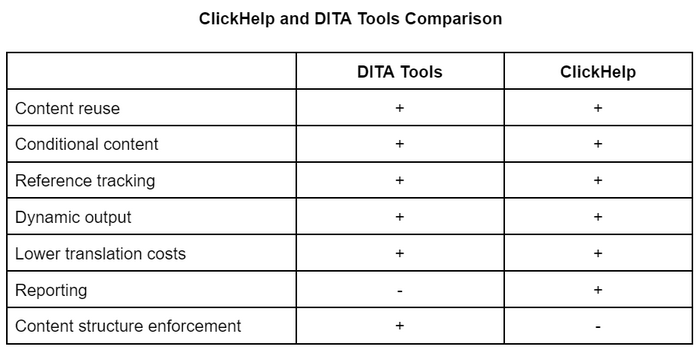
Any technical writer knows that the document creation process can be full of challenges. From using the right terminology to using the appropriate tools, there are a lot of things that can trip you up. For example, technical writing in the pharmaceutical industry is a highly specialized field with very little “creative license” with documents. It is very important for manufacturing documentation, reporting on problems, laboratory test methods, batch production records, etc. to all be crystal clear in their instructions as lives depend on it. This industry is highly regulated, so it is critical to submit accurate and compliant content to regulatory agencies.
However, for many years, the industry has relied on unstructured authoring environments like Microsoft Word and file storage solutions like SharePoint to create and manage content.
Of course, MS Word or SharePoint have served their purpose, but they can also pose significant challenges, such as version control and collaboration issues.
Let’s contemplate the challenges of unstructured environments and how to overcome them and achieve positive results for the pharma industry.
Challenges of Unstructured Authoring Workflow
Unstructured authoring environments, such as Microsoft Word, can present a range of challenges for content creators, particularly when working collaboratively or attempting to manage a large volume of content:
- The first significant challenge is version control. As multiple individuals work on a document simultaneously, it can be challenging to keep track of who made which changes and when. This can lead to confusion, errors, and discrepancies in the content. Additionally, when documents are shared and edited through email, file version control can become even more problematic.
- Another challenge of unstructured authoring environments is formatting. When working with large documents, particularly those that include images, tables, and other visual elements, formatting inconsistencies can easily arise. For instance, it can be challenging to ensure that headers, footers, and margins are consistent across a document, particularly when multiple individuals are working on different sections.
- Collaboration is also a potential issue as more individuals become involved in the document creation process, it can become increasingly challenging to manage input and feedback. There is also the potential for conflicting input, which can lead to delays in document completion or create confusion regarding the final version of the content.
- In addition to these challenges, finding specific files within the platform can be challenging when working with file storage solutions like SharePoint. This can lead to confusion in document completion, particularly when attempting to locate specific versions or versions of documents.
To overcome these challenges, organizations may need to consider alternative authoring tools or implement systems and processes that facilitate collaboration and content management.
Benefits of Structured Authoring Environments
Structured authoring environments offer several benefits over unstructured authoring environments, particularly when it comes to content creation and management. In the pharmaceutical industry, where accurate and up-to-date documentation is critical for regulatory compliance, structured authoring environments can offer significant advantages:
- One of the primary benefits of structured authoring environments is the greater control they provide over the content. By using predefined templates and standardized content models, organizations can ensure that all content adheres to a consistent structure and formatting. This makes it easier to manage and update documentation, and it also helps to maintain compliance with regulatory standards.
- Structured authoring environments also offer better collaboration features. For instance, multiple individuals can work on the same document simultaneously, with changes and updates synchronized in real time. This can help to reduce errors and ensure that all stakeholders are on the same page. Additionally, collaboration features can help to streamline the review and approval process, further enhancing the efficiency of content creation and management.
- Another significant advantage of structured authoring environments is improved version control. By using a centralized content management system, all revisions and changes can be tracked and managed efficiently. This ensures that content remains up-to-date and accurate, and it also provides a clear audit trail for compliance purposes.
Structured authoring environments can offer significant benefits for content creation and management in the pharmaceutical industry. By providing greater control over the content, improved version control, and better collaboration features, structured authoring solutions can help organizations to create and manage high-quality documentation more efficiently. With several structured authoring solutions available, pharmaceutical companies have options to choose from to meet their specific requirements.

Structured Authoring: Best Practices for Creating Effective Content
Implementing structured authoring environments can offer significant benefits to pharmaceutical companies in terms of content creation and management. However, there are several challenges that organizations may face when implementing these solutions. We’ll elaborate upon them below.
To overcome such challenges, there are several strategies that pharmaceutical companies can employ:
- It is essential to engage stakeholders early in the process to gain buy-in and ensure that their concerns are addressed. This can involve working with key stakeholders to identify pain points and develop solutions that meet their needs.
- Structured authoring environments can be complex, so it is crucial to provide comprehensive training and support to ensure that individuals understand how to use the new tools and processes effectively.
- Set achievable goals for the implementation of structured authoring environments. This can involve setting specific targets for content creation and management, as well as establishing metrics to track progress and measure success.
- To build momentum and demonstrate the value of structured authoring environments, it can be useful to identify and implement quick wins. This can involve identifying small, achievable projects that can demonstrate the benefits of the new system.
- Finally, it is crucial to ensure that executive leadership is fully on board with the implementation of structured authoring environments. This can involve making a compelling business case for the new system, demonstrating the potential ROI, and securing the necessary resources to ensure a successful implementation.
Documentation Solutions for the Pharmaceutical Industry
Structured documentation solutions have become increasingly popular in recent years, particularly in industries like pharmaceuticals, where compliance with regulatory requirements is critical. The structured authoring is closely connected with the XML format. For example, DITA (Darwin Information Typing Architecture) is an XML-based architecture for authoring, producing, and delivering technical information, designed to provide a standardized way to structure the content for reuse and repurposing. It is not tied to any specific tool or software. The tool-independent content can be created and managed using a variety of tools, as long as those tools support the same standard or markup language. For example, if you create content using DITA architecture, you can use any DITA-compliant authoring tool to create and manage that content. But you must learn DITA for that purpose.
There are special building blocks that are used in the DITA content model. These building blocks include:
- Topics. A topic is a unit of content that provides information about a specific subject or task. Topics are typically standalone pieces of content that can be reused in different contexts.
- Maps. A map is a container for topics and other maps. Maps provide a way to organize and structure content, and they can be used to create different outputs for different audiences or purposes.
- Modules. A module can be thought of as a self-contained unit of information that can be used and reused in a variety of contexts.
- Specializations are a way to extend or customize the DITA content model to meet specific needs. For example, an organization may create a specialization for product documentation that includes specific elements and attributes related to their products.
- Elements and Attributes. Elements are used to define the structure of content, while attributes provide additional information about elements.
- Constraints are used to restrict or modify the use of elements and attributes in the DITA content model. Constraints can be used to enforce consistency and standardization across content.
The user interface of DITA tools may include a variety of features that help to ensure consistency and standardization across content. For example:
- Templates: DITA tools often provide a variety of pre-built templates that authors can use to create content in a consistent format. Templates may include formatting for headings, paragraphs, lists, and other common content elements.
- Stylesheets: DITA tools may also include pre-built stylesheets that authors can use to apply consistent formatting to content. Stylesheets may include formatting for fonts, colors, spacing, and other visual elements.
- Content libraries: DITA tools often include content libraries that provide a repository of pre-built content modules that authors can use and reuse across multiple documents and projects.
Overall, DITA tools work by providing a structured and standardized approach to content creation and management that enables organizations to create high-quality, consistent, and reusable content. Here are some of the most popular DITA tools:
- Oxygen XML Editor is a comprehensive XML editor that supports DITA as well as other XML-based markup languages.
- Adobe FrameMaker is a desktop publishing software that supports structured authoring with DITA as well as other markup languages.
- IXIASOFT CCMS is a component content management system that supports DITA content.
- easyDITA is a web-based DITA authoring and publishing tool that is designed for teams that collaborate on content creation.
- With DITA Exchange, users can create DITA content using a web-based authoring tool or by importing content from other sources.
- Documentum Life Sciences Suite – a content management system designed specifically for the pharmaceutical industry. This solution includes a range of features, including content authoring, review and approval workflows, and regulatory compliance tools.
DITA Drawbacks and Alternatives
Despite all the benefits you get from using structured authoring environments, they can be difficult to implement for several reasons:
- One of the primary challenges is resistance to change, as individuals may be accustomed to working with familiar tools like Microsoft Word and may be resistant to new processes or systems that they perceive as adding complexity or taking up more time.
- Another challenge is resource constraints, as implementing a structured authoring environment requires an investment of time, money, and personnel.
- Additionally, structured authoring environments can be complex, so it is crucial to provide comprehensive training and support to ensure that individuals understand how to use the new tools and processes effectively.
- Finally, organizations may struggle to set achievable goals for the implementation of structured authoring environments and may struggle to secure executive buy-in for the new system.
As you can see, implementing DITA is difficult, time-consuming, and costly. But are there any alternatives when you need to tame the chaos of content management? As it turns out, there are! The fact is, you don’t always need all of the DITA elements – content reuse may be enough to solve 80% of your problems, and then DITA seems like overkill. In such cases, take a look at ClickHelp – this documentation authoring platform solves many documentation management problems more easily than DITA. In particular, it supports single sourcing, content reuse, version control, collaboration features, and the ability to publish content in multiple formats. In addition, this platform already includes hosting – you get not just an editor, but a development and deployment environment! Overall, using tools like ClickHelp can help streamline the content creation and management process, improve collaboration and version control, and ensure regulatory compliance.
Below is a table that gives you a more explicit comparison of the problems solved by ClickHelp and DITA Tools. As you can see, ClickHelp solves 85% of the problems traditionally thought to require DITA.


Conclusion
Structured authoring environments offer several benefits over unstructured authoring environments, particularly when it comes to content creation and management in the pharmaceutical industry. These benefits include greater control over content, improved version control, and better collaboration features. Strategies for implementing structured authoring environments include involving stakeholders early on, providing training and support, setting realistic goals, identifying quick wins, and ensuring executive buy-in.
Overall, the pharmaceutical industry can greatly benefit from the implementation of structured authoring environments to improve its content creation and management processes, ensure regulatory compliance, and ultimately improve patient outcomes. But structured authoring tools are not the only option here. Take a look at ClickHelp – with support for content reuse and single sourcing, our platform empowers you to solve 85% of your documentation challenges with ease. Plus, with built-in hosting and a comprehensive development environment, ClickHelp is more than just an editor – it’s a complete solution for all your documentation needs. Don’t let the complexity of DITA hold you back – discover the power of ClickHelp today.
Good luck with your technical writing!
ClickHelp Team
Author, host and deliver documentation across platforms and devices

